The reconstruction and revival of the monastic life today is, as always, based on the renewed practice of the eucharistic and hesychastic life in the parishes, and the monasteries (it is the fruit of repentance of the people).
The Tradition about the Jesus prayer in Macedonia and in Matka is an inseparable part, never ceasing, from the apostolic times until today. And although we know that the flame of the Jesus Prayer constantly burned in the hearts of the prayerful hesychasts, in the heart of the living Tradition of the Holy Fathers, in certain moments it was intensely burning.
We will follow exactly the continuity of the ascetical-hesychastic Tradition in Matka and in Macedonia, through these figures, these lights, that were willing to deny themselves and, sacrifice themselves for God and their fellow men. They testified and preached about Christ in this territory, they were burning in order to glow even today.
In one of his sermons, St. Gregory Palamas says about her, “Investigating about what is needed the most for the prayerman to be in sinaxis with God, through which path does prayer come, the Most Holy Theotokos finds the Holy Hesychasm – ‘silence of the mind’, away from the world, forgetting everything earthly and craving for divine revelations, a choice of the ‘better part’. Reveals that if the mind is not distracted by the earthly things, could be given into better and higher actions, which means to turn to himself: the only action by which he could unite with God.
…Those who also do this, those who, with Holy Hesychasm have purified their hearts and in an ineffable way have approached the One who is above every feeling and thought, and within themselves as in a mirror they can see God. Hesychasm is a quick and direct guide, to successful unifying with God, especially for those who in everything and completely are practicing it. And what can we say about Mother Mary, who from childhood was in hesychia? Supernatural prayerful hesychasm, from the youngest years, She, precisely because of this – not knowing about man – She got the grace to give birth to the God-man Christ. “
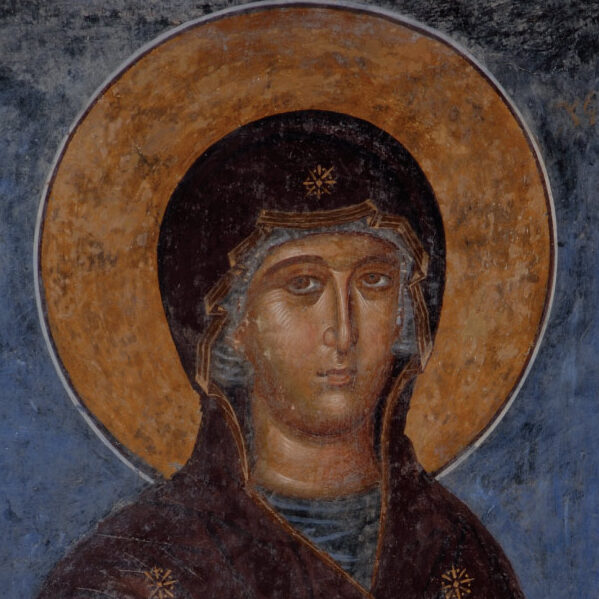
The Most Holy Theotokos
The Most Holy Theotokos with her example and experience, in itself – gave forever, to the whole venerable monastic habit, an image of a humble and careful life of the inner man, so the monks could, by renounce the world, look up to her, in the zeal of their monastic struggles and the noetic prayer, each according to his powers, but after the prayers of the Most Holy Theotokos, so they can follow Her.
The Most Holy Theotokos, the fruit of the prayerful life showed even at the Annunciation when She calmly answered St. Archangel Gabriel, after the news that She would conceive and give birth to the Son of Almighty God: “Let me according to thy word.” She simply obeyed and said to be God’s will.
In part of her biography, they say, wanting to visit the resurrected Lazarus – Bishop of Cyprus, by God’s providence arrived on Mount Athos and blessed it.
In a section of her biography, it is said that, wanting to visit the resurrected Lazarus – a Bishop of Cyprus, by God’s providence, she arrived on Mount Athos and blessed it.
The Most Holy Theotokos was sailing together with St John the Theologian to Cyprus, to visit Lazarus. When the ship with which she sailed, from the storm was pushed out of the course, to Macedonia, to then, pagan Athos, they were forced to reach the port of Klement, close to today’s monastery Iverion, and Mother Mary went ashore. The pilgrims of Apollos, who were there at the time, came out to greet her and Mother Mary, after their plea, began to speak about the Lord Jesus. Moreover, to all of them God opened their hearts, and they immediately wanted to be baptized and to go where she would order them. The Apostles who traveled with Her, christened them, and told them to stay in that place, and She left one of her entourage to confirm them in the faith. Before She left, She blessed them and uttered: “This place shall be my favorite garden which was given to me from my God and Son. May the grace of God, be on it and all who dwell here with piety, and who keep the commandments of my Son and pray to Him. His mercy will be with them till the end of the world. For I will be a proxy for this place, and their warm mediator before the Son and my God.”
From that moment the mountain is dedicated to the Mother of God, as her garden, upon which no other woman is permitted to set foot.
This was her last trip before the Dormition, when after her wish, for the last time she saw and blessed the Apostles which in a miraculous way, God had gathered in the home of St. Apostle John, and among them was St. Apostle Paul.
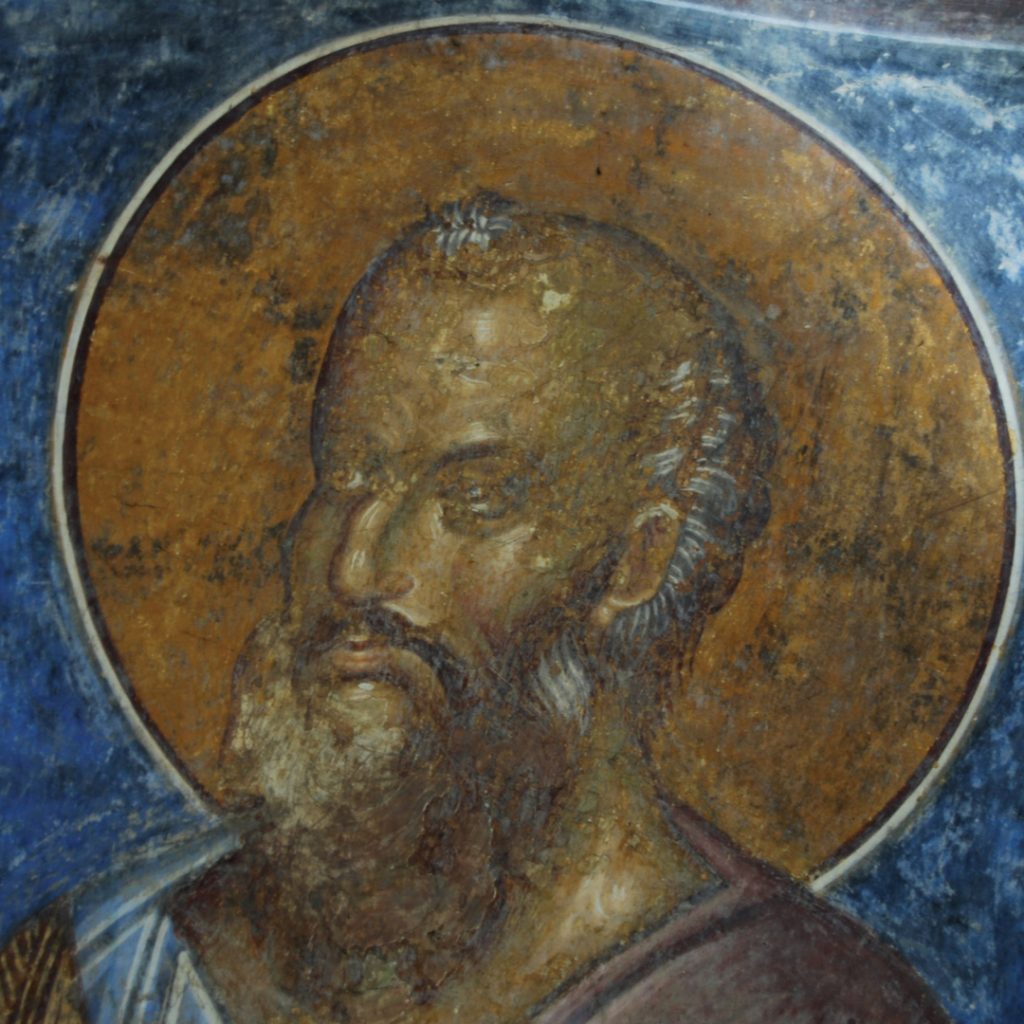
Saint Apostle Paul
The youngest of the apostles – as he calmly called himself, St. Paul, was the first to preach in Macedonia.
His every sermon would end with the establishment of a Church, consecration of bishops and priests, with the creation of Christian community. Besides being a preacher, he was a teacher, pastor and father. The Epistles of St. Paul testify to his continual and strong links with the churches he founded. The divisions among the Christians concerned him, so he would advise them and offer guidance, resolve the problematic issues, sometimes even threaten them, warn them, instruct them. The Apostle Paul to full extent exercised, and lived the ideal of being a pastor, that he had formulated: “I have become all things to all men so that by all possible means I might save some.” His every written word shows how strongly he felt responsibility for all the souls of the Church, each one of them: “…of whom I travail in birth again until Crist be formed in you.” (Gal 4:19)
Father Alexander Schmemann speaks of him: “All his teachings, words, ultimately, are boiled down to one, primary and tirelessly repeating the claim and call: “In Christ”. In these two words is contained the whole meaning of Christianity, as a sketch of the Christian life. The Faith and the Baptism have united us with Christ and now we live in Him, for Him we live His life.” The full extent of that life is what Paul says, “I no longer live, but Christ (is) who dwells in me.” The Kingdom of God the Apostle reveals it to us in the Epistles, the life of Christ Himself, that has been granted to the people, a Life which brings them together through the Holy Spirit inseparably interconnected in unity and in unity with God. “
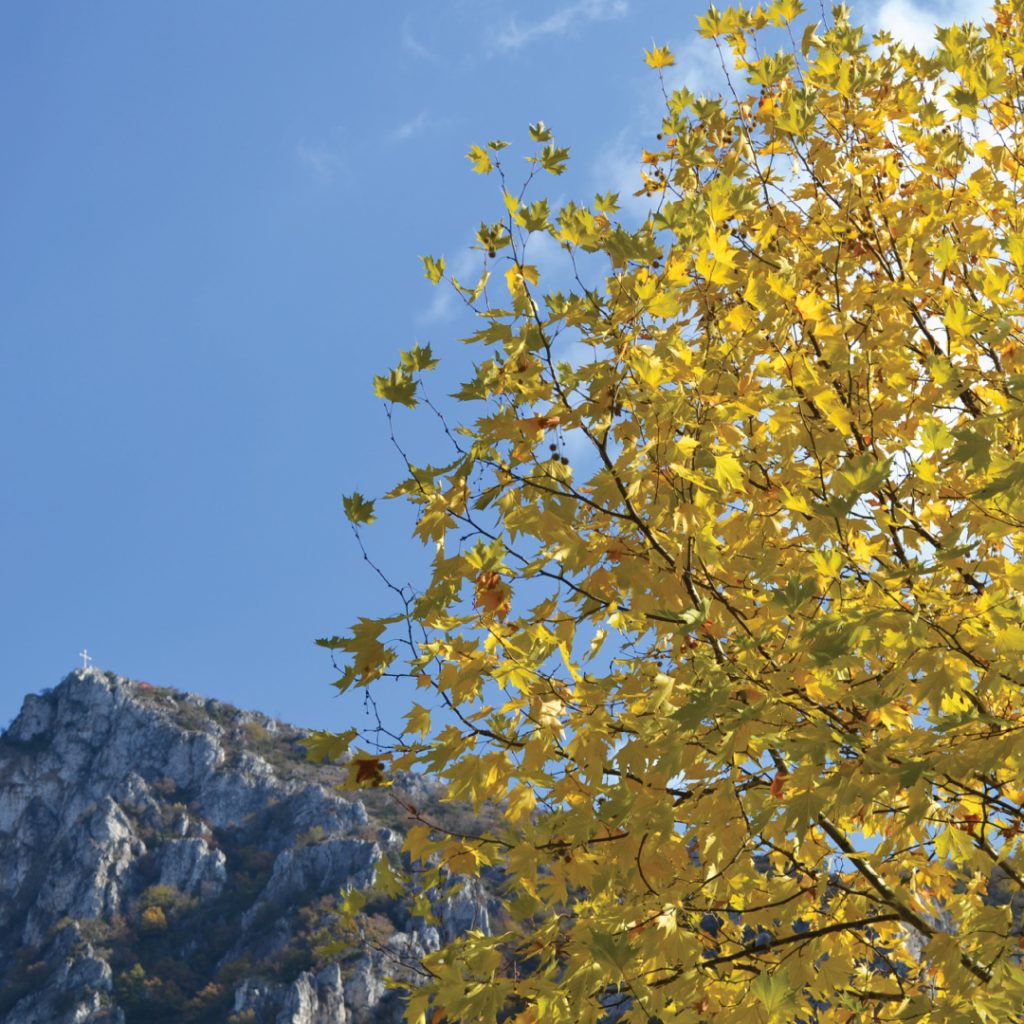
Saint Lydia
The spread of Christianity in this area is nicely described by Alexander Menj in this except from his book “History of Religions”:
“Macedonia is very different from the dry countries of Hellas or Judea with their bare areas. The wide highway (Ignatius military-postal route that connected the Black to the Adriatic Sea) led the missionaries through oak and pine woods, through streams and meadows, and above all that, among grey fog, was the mountain peak Pandeja on which the first snow drifts could be seen. In the surrounding areas shepherds and farmers lived, known for their durability, humble character and healthy mind.
…after a few hours they went down the valley and entered in Philippi. Paul did not think to abandon the former tactic: first to go to the Jews, but found that there was not even a dozen men who were necessary to establish a synagogue, and there was only a small group of people who confesed Judaism and who were preparing for prayer outside the walls next to the creek. Here, under the open sky, among willows and rocks, next to the quiet glittering water, echoed the words of the Gospel, the first that were heard by the people of Eastern Europe.
First who was baptized in the name of Jesus was Lydia. St.. Luke, who accompanied the apostle Paul writes: “The Lord opened her heart.”
Among the local residents, Paul finally could have a rest: he felt like home. The situation in Philippi was very suitable. For several months, Paul created a strong municipality and chose its guardians: bishops and deacons.
The apostle remained for 3 years in Macedonia traveling and preaching. After his departure the care of churches continued by writing epistles to them. Again he returned to Philippi in the summer of 57AD, where he travelled and preached throughout Macedonia even in the neighbouring Illyrian lands (modern Albania). “
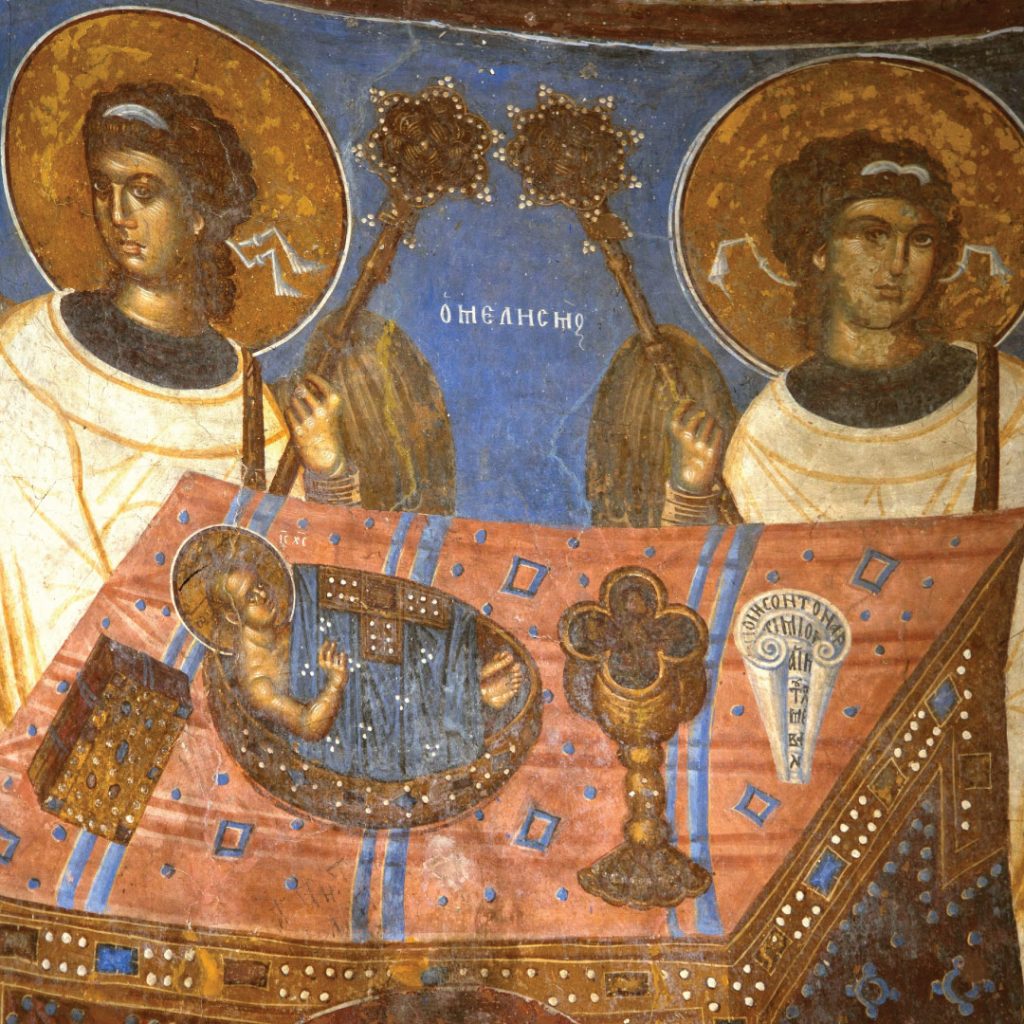
Holy martyrs
The great apostle ended His worship with a testimony, not only of words but of blood. He suffered as a martyr in Rome, just like the Apostle Peter.
What kind of period starts then? After them remain only a few groups of people, scattered around the world, that nobody knows, and, in the beginning, almost nobody notices. Yet not long after, began the persecution of the Church. For as Christ suffered, following his example, so too did thousands of saints, from children to older people. St Apostle Paul addresses the Christians through his epistles “they think of us as cheats, but we are righteous; for strangers, but we are well known; they guard us as we are dying, and here – we live; they punish us, but they can not killed us; nor sadden us, as we are always happy; they consider us as poor, but many we made wealthy; like we have nothing , but everything we have. “
In this period, the holy martyr and Antioch Bishop Erasmus, spent the last years of his life in a cave near Hermelia. He had the gift of miracles, and preached the gospel in several places throughout Macedonia. In Ohrid he resurrected the son of a man named Anastas and baptized him. He was tortured by the Emperor Maximilian, who was then in Illyria, and was imprisoned. He was freed from the prison by the holy Archangel Michael, as once was done with the Apostle Paul. He travelled to Campania, but again returned to Hermelia. He died in 303 AD. The cave where the church of the holy martyr Erasmus, can still be found not far from Ohrid.
After 10 years of his repose the Christianity becomes a recognised religion and the persecutions stop in the Byzantine kingdom.
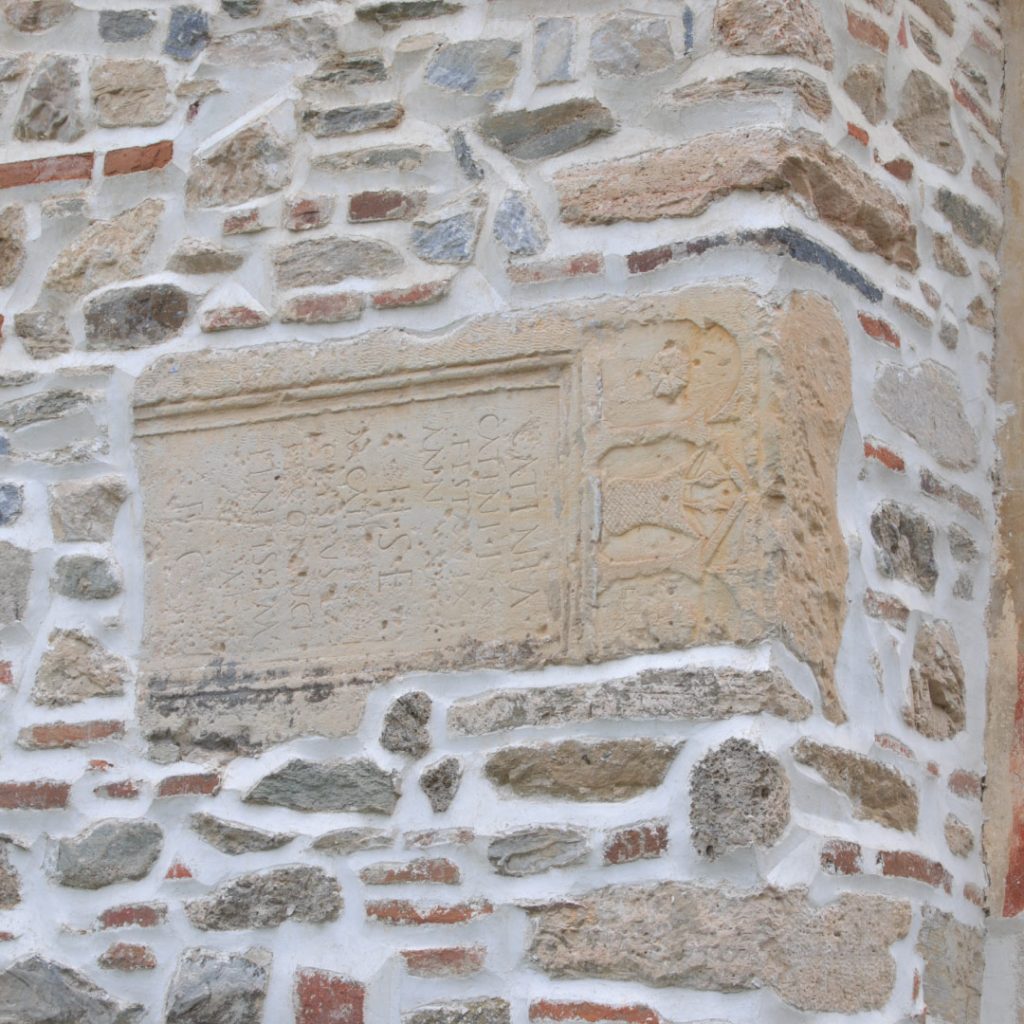
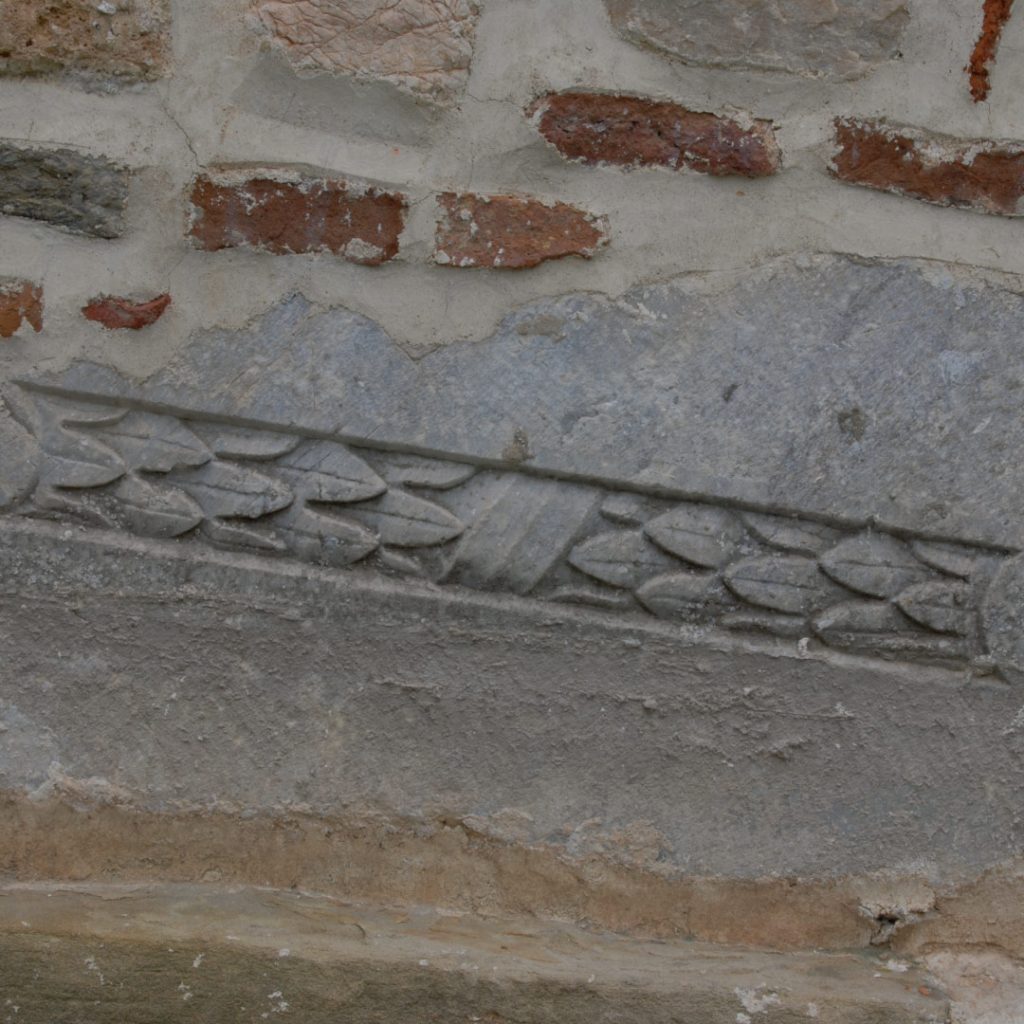
The inhabitants of Matka
During the Roman period, the region of Matka fell within the province of Upper Moesia, whose administrative centre, it seems, was the ancient city Skupi (near the village Zlokukani). In the regions of Skopje, usually near the city Skupi, retired soldiers would receive land and build their own dwellings. According to the archaeological excavations, the graves of those buried here were often marked by memorial gravestones in the form of steli.
Probably the most representative residential complex of the Early Roman period was in the Lower Canyon area, where today lies a great number of weekend (holiday) settlement houses. The remains and traces of the south-western outskirts of the settlement even today can be seen north of the school, toward the bottom of the hill, near the monastery.
On the north facade of the church, in the monastery, is a built-in grave stone that bears the inscription: “Here lies the liberated Katinija Katyn Festa, who lived 29 (or 40) years. Mark Katinij Crispus, a liberated slave and a husband of the respected took care to make (the monument)”. They were freed slaves of Katinij and during the 2nd century they settled in this place.
The interior of the church bears some built-in stone elements from the Early Roman period (II century), such as:
1.Part of the architrave (upper beam) of white marble, walled in the northern facade. Its lower (sometimes a ceiling) side can be seen, decorated with leaves and transverse balteus (lat. belt)
2. Corinthian capital, walled right of the architrave.
The assumption that many residents of Lower Matka received Christianity very early is bold, but not without basis. By the 4th century, when the construction of the first Christian basilica (in Byzantium) was initiated, the Christians would gather into structures that represented assemblies and temples. After the construction of the basilica they had already participated in worship services in the early Christian church.
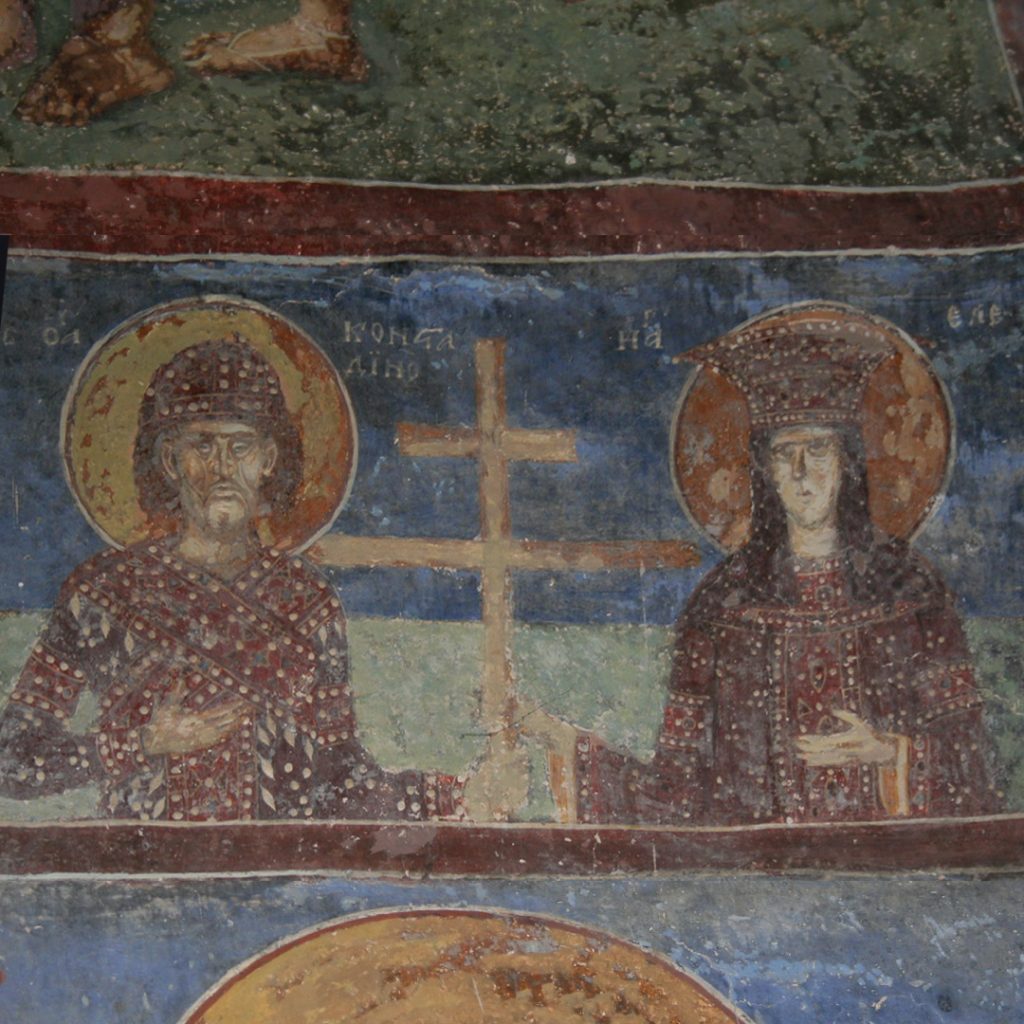
The Councils. Holy Kings
It was Constantine’s ascention as the head of the Roman state, which marked a turning point for Christianity, and the persecutions ceased. In 313AD in Milan, he and his co-ruler Licinij signed an “edict” formally acknowledging Christianity as a religion. In 323AD Constantine became the sole ruler of the kingdom, after which he consistently pursued a pro-christian policy, including founding the new capital of Byzantium, Constantinople.
Emperor Theodosius, in 381AD, gave Christianity the status of state religion. The Macedonian churches were under supervision of the the apostolic seat in Rome. Skupi, judging by the remains of the Basilica, experienced resurgence in the early 4th century. In the early 5th century a new Christian basilica was built, and restored after the attacks of the Huns.
In 412AD, the Pope Vicentius founded the episcopal headquarters in Solun with the supervision of the whole eastern lllyric, with Rufus as the first bishop. In 421AD the Emperor Theodosius II, upheld a law under which the bishop of Constantinople became judge of all ecclesiastical disputes in lllyric. Although these decisions were occasionally changed in 529AD, the law was ratified by the Emperor Justinian. On April 14, 535AD Justinian established the archdiocese Justiniana Prima, as an autocephalous church with a very broad territorial subordination, covering the territory of Moesia and Dacia. The events that followed are undocumented due to the great advance invasion, of the Slavs and Avars, which caused the decline of church life in Macedonia until the late 6th and early 7th century. The activities of the Archdiocese Justiniana Prima can be traced from 680AD to 681AD, since when there is no data available.
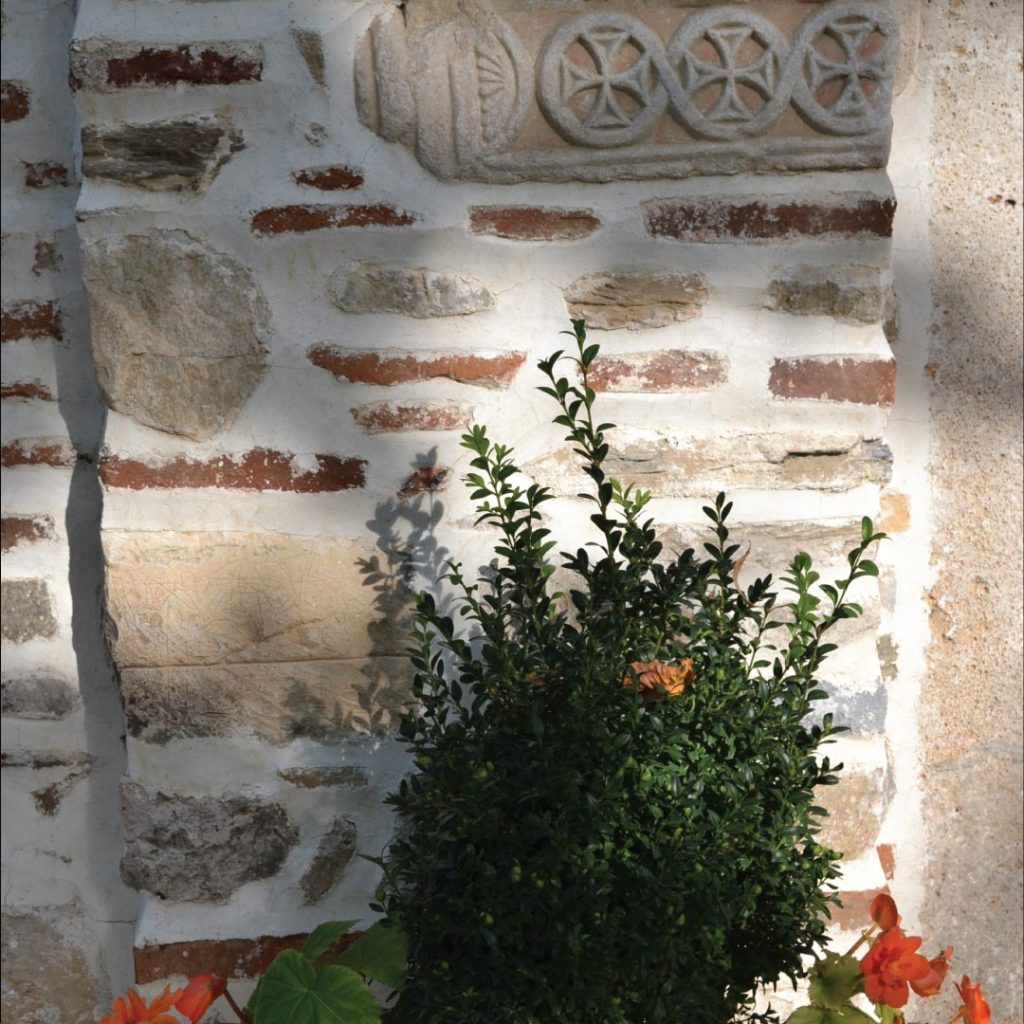
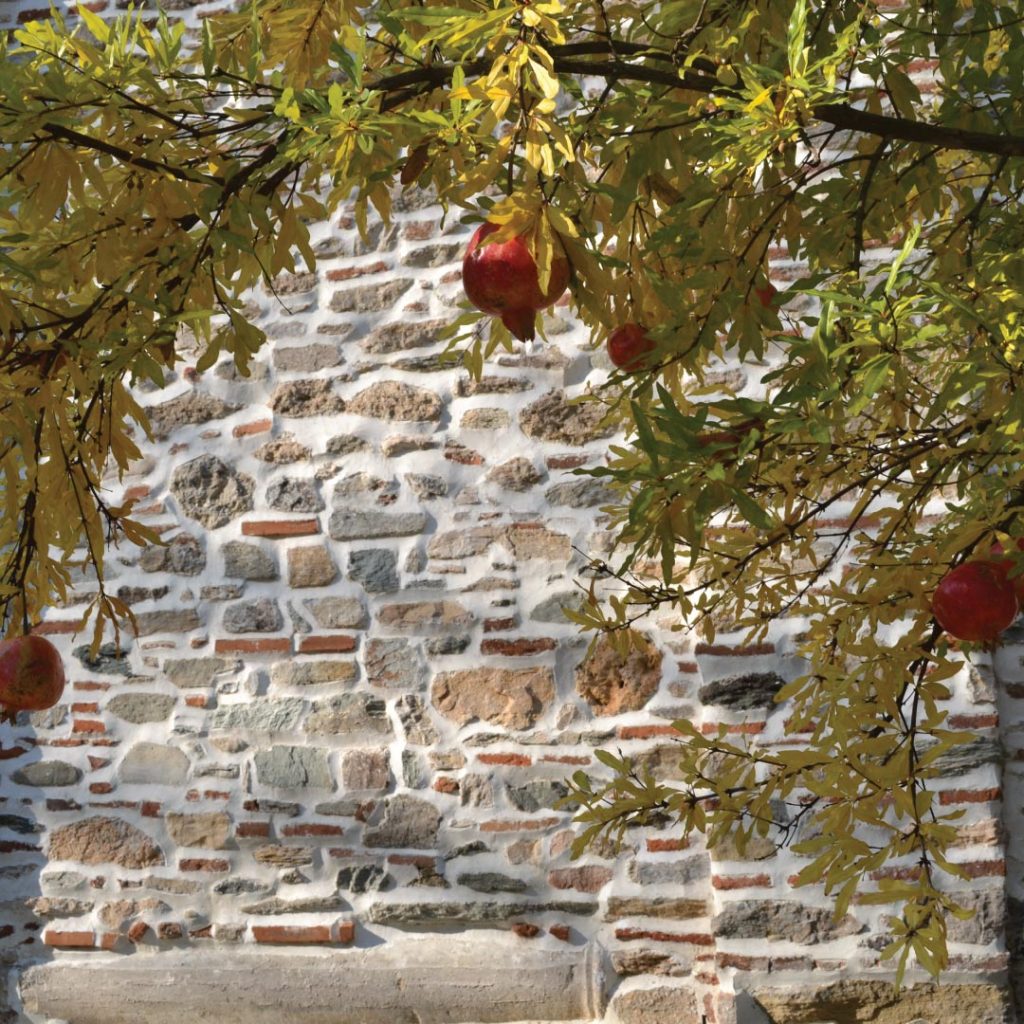
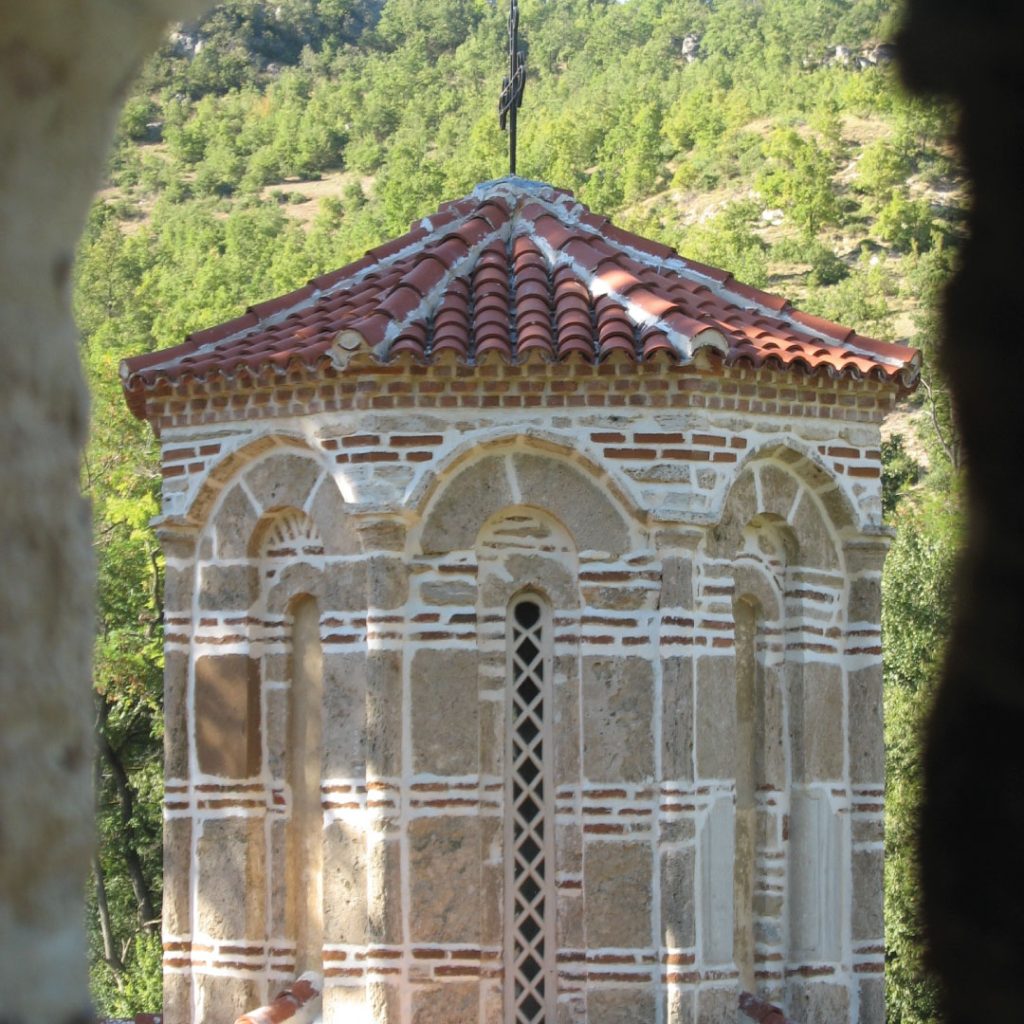
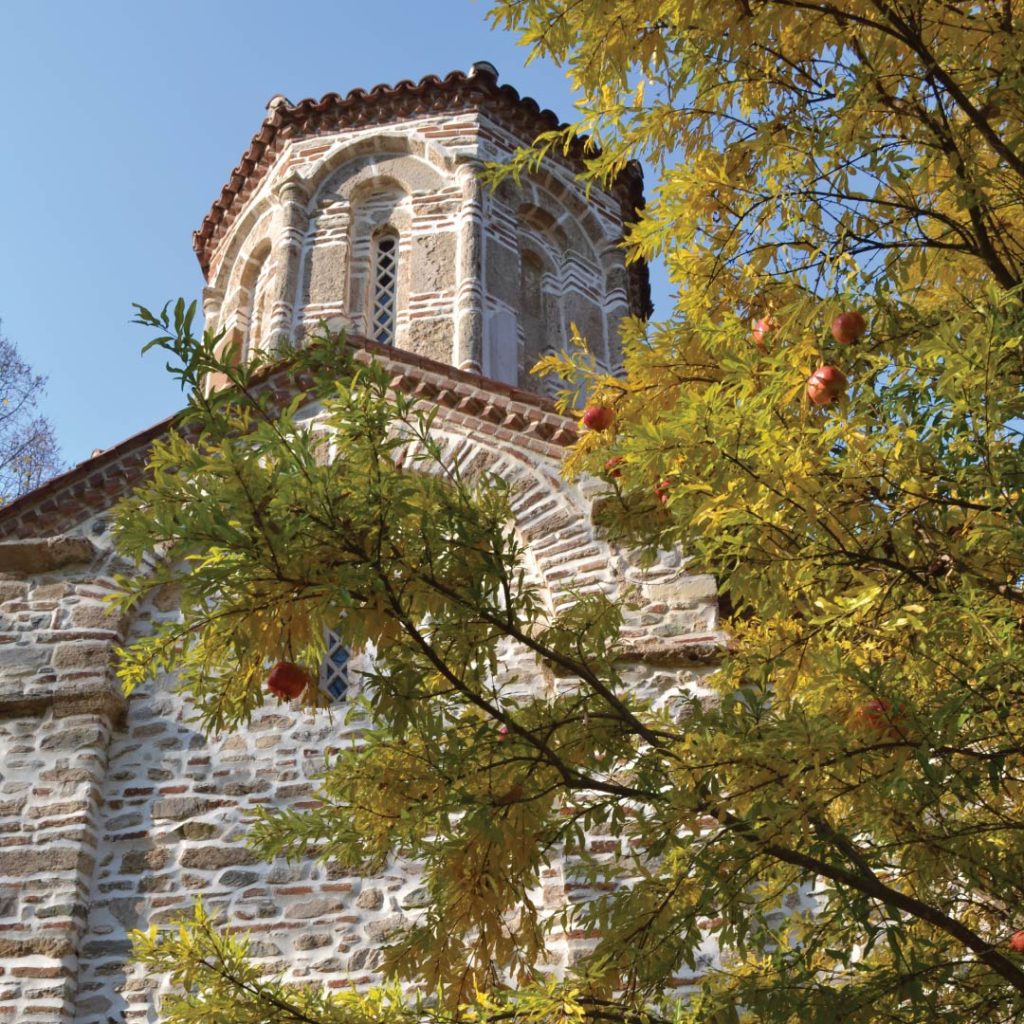
The councils. Early Christian basilicas - Matka.
It is considered that the Christianisation and the emergence of monasticism in Macedonia, as part of the Byzantine state, occurred simultaneously with their spread throughout the Byzantine Empire. Already in the 4th century, the Christianisation in Macedonia was complete, and the emergence of monasticism began in the 5th century. The headquarters of Justiniana Prima, established in the 5th century as an autocephalous church, was near the village Taor, which is thought to be the origin of St. Tsar Justinian.
It can’t be confirmed with certainty, when the caves around Matka began to be populated by the first monks and hermits, but due to its inaccessibility, it became their refuge quite early. With its three famous basilicas of this early Christian period, and the remnants of building materials from constructions (one in the area where in the Middle Ages many hermit cells were built), of the late-antique period, Matka, near the headquarters of the Archdiocese, was certainly a Christian center as early as the 4th century.
Later, the dioceses of Justiniana Prima completely belong to the Ohrid Archdiocese.
From this period in the region of Matka there are remains of stone plastic, bricks, and other building materials from basilicas, in part embedded in all the temple buildings that exist today.
In the 6th century, an early Christian basilica was erected within a framework, probably under the foundations or near the present church. Without detailed excavation, its exact position is difficult to detect, but its existence is evidenced by the stone remains from it embedded in the outer walls of the monastery church.
1. Two Meno’s (double window pillars of marble) from the early Christian basilica in the walled dome tambour.
2. Fully preserved pillar of travertine, walled in the south wall, with the length of 185.5 metres.
3. Two parts of one altar pillar, decorated with kantharos (chalice) with a wine which formes six circular areas in which we can see four Christian crosses, trefoil tree and a six-leaf rosette.
4. Part of the altar pillar with a decoration of pleated rhombuses.
5. Small altar four-leafed capital walled of the northern facade, below.
All of the listed stone elements originate from an early Christian basilica.
